Romantic Love & Dating: A Journey Through Time, Psychology, and Modern Landscapes
Romantic love, that intoxicating blend of passion, intimacy, and commitment, has captivated hearts and fueled imaginations for centuries. It’s the subject of countless poems, songs, and stories, and a driving force behind many of our life choices. Dating, on the other hand, is the process through which we explore the potential for romantic connection, navigating the complexities of attraction, compatibility, and long-term prospects. This article delves into the multifaceted world of romantic love and dating, examining its historical evolution, psychological underpinnings, and the evolving landscape of modern relationships.
Part 1: The Historical Tapestry of Romantic Love
While the biological imperative to procreate has always existed, the concept of romantic love as a primary reason for pairing is a relatively recent development. Examining its historical trajectory reveals how societal structures, cultural norms, and economic realities have shaped our understanding of love and courtship.
1.1 Ancient World and Arranged Marriages:
In ancient civilizations, marriage was primarily viewed as a strategic alliance, a means of consolidating power, securing inheritance, and ensuring social stability. Romantic love, while it might have existed, was not a prerequisite for marriage and was often considered secondary to practical considerations.
- Ancient Greece and Rome: While Greek mythology is replete with tales of passionate love affairs, these were often depicted as tumultuous and destructive forces. Marriage, particularly for the upper classes, was primarily a political and economic arrangement. The concept of eros (passionate, sensual love) existed, but it was often separate from agape (unconditional, selfless love) and philia (brotherly love), which were considered more virtuous forms of connection. Similarly, in Roman society, marriage was a patriarchal institution designed to produce legitimate heirs and maintain social order. Love, while sometimes present, was not the defining factor in choosing a spouse. [mfn refencenumber 1 link]
- Ancient China and India: Similar to the West, arranged marriages were the norm in ancient China and India. Familial lineage, social status, and economic stability were paramount considerations when selecting a partner. Romantic love was not discouraged, but it was not seen as a necessary foundation for a successful marriage. Confucian principles in China emphasized filial piety and social harmony, placing family needs above individual desires. In India, the caste system and the importance of upholding family traditions further reinforced the practice of arranged marriages.
1.2 The Rise of Courtly Love and Romantic Ideals (Medieval Period):
The medieval period saw the emergence of courtly love, a highly stylized and idealized form of romance that profoundly influenced Western notions of love and courtship. Originating in the aristocratic courts of Europe, courtly love celebrated the ennobling power of love, particularly towards a lady of high social standing.
- Chivalry and Idealized Love: Courtly love emphasized chivalry, honor, and the devotion of a knight to his lady. The lady, often unattainable or married, was idealized and worshipped from afar. The knight’s love was a source of inspiration, motivating him to perform heroic deeds and demonstrate his worthiness. This idealized form of love, often expressed through poetry, song, and elaborate rituals, contributed to a growing appreciation for emotional connection and personal expression in romantic relationships. [mfn refencenumber 2 link]
- Influence on Literature and Art: Courtly love permeated medieval literature and art, shaping popular narratives and artistic representations of love and romance. Works like Chrétien de Troyes’ Arthurian romances and the poetry of the troubadours celebrated the themes of longing, devotion, and the transformative power of love. These artistic expressions helped to disseminate the ideals of courtly love and contributed to a shift in attitudes towards love and courtship.
1.3 The Renaissance and Reformation: Shifting Perspectives:
The Renaissance and Reformation brought about significant changes in European society, including a renewed emphasis on individualism and a questioning of traditional authority. These developments had a profound impact on attitudes towards love and marriage.
- Humanism and Individual Choice: The humanist movement celebrated human potential and emphasized individual reason and autonomy. This led to a greater emphasis on personal choice in marriage, challenging the dominance of arranged marriages. While parental approval remained important, individuals began to have a greater say in selecting their partners.
- Protestant Reformation and Marriage: The Protestant Reformation redefined the role of marriage, emphasizing its spiritual significance and promoting the idea of companionate marriage based on mutual love and respect. Reformers like Martin Luther advocated for marriages based on genuine affection and saw marriage as a partnership between equals. This contributed to a gradual shift away from the purely pragmatic view of marriage towards a more romanticized ideal.
1.4 The Enlightenment and the Rise of Romantic Love:
The Enlightenment, with its emphasis on reason, individual rights, and emotional expression, played a crucial role in the rise of romantic love as a dominant ideal in Western culture.
- Emphasis on Emotion and Sensibility: Enlightenment thinkers challenged the emphasis on reason and rationality, arguing for the importance of emotion and sensibility in human experience. This led to a greater appreciation for the power of love and its ability to bring joy, fulfillment, and personal growth.
- Influence of Romanticism: The Romantic movement, which emerged in the late 18th and early 19th centuries, further solidified the ideal of romantic love. Romantic writers and artists celebrated the power of emotion, imagination, and individual experience. They saw love as a transformative force that could transcend social boundaries and bring individuals closer to their true selves. [mfn refencenumber 3 link]
1.5 The Victorian Era: Idealization and Repression:
The Victorian era was characterized by a complex and often contradictory attitude towards love and sexuality. While romantic love was highly idealized, societal norms and expectations often restricted its expression.
- Idealization of Marriage and Domesticity: Victorian society placed a strong emphasis on marriage and domesticity. The ideal Victorian woman was expected to be pure, virtuous, and devoted to her husband and family. Marriage was seen as a sacred institution and the cornerstone of social order.
- Repression of Sexuality: Victorian society was also characterized by a strict code of sexual morality. Open discussion of sexuality was discouraged, and premarital sex and extramarital affairs were considered scandalous. This repression of sexuality often created a tension between the idealized image of romantic love and the realities of sexual desire and intimacy.
1.6 The 20th and 21st Centuries: Evolving Definitions and Modern Dating:
The 20th and 21st centuries have witnessed significant changes in attitudes towards love, sex, and relationships. The rise of feminism, the sexual revolution, and the advent of online dating have all contributed to a more diverse and fluid landscape of romantic possibilities.
- Feminism and Equality: The feminist movement challenged traditional gender roles and advocated for equality in all aspects of life, including relationships. This led to a greater emphasis on mutual respect, shared decision-making, and equal opportunities within romantic partnerships.
- Sexual Revolution and Changing Norms: The sexual revolution of the 1960s and 1970s challenged traditional sexual norms and attitudes. This led to a greater acceptance of premarital sex, cohabitation, and diverse sexual orientations.
- Online Dating and Technology: The advent of online dating has revolutionized the way people meet and form relationships. Online dating platforms offer a vast pool of potential partners and allow individuals to connect with others based on shared interests, values, and preferences. However, online dating also presents unique challenges, such as the potential for misrepresentation and the difficulty of assessing chemistry online.
Part 2: The Psychology of Romantic Love
Beyond the historical context, understanding the psychological underpinnings of romantic love provides valuable insights into why we fall in love, how we form attachments, and what makes relationships succeed or fail.
2.1 Attachment Theory:
Attachment theory, developed by John Bowlby and Mary Ainsworth, posits that our early experiences with caregivers shape our attachment styles, which in turn influence our romantic relationships in adulthood. [mfn refencenumber 4 link]
- Secure Attachment: Individuals with secure attachment styles tend to be comfortable with intimacy and autonomy. They are able to form close relationships without becoming overly dependent or fearing abandonment.
- Anxious-Preoccupied Attachment: Individuals with anxious-preoccupied attachment styles crave intimacy and validation from their partners. They may be overly dependent and fear rejection.
- Avoidant-Dismissive Attachment: Individuals with avoidant-dismissive attachment styles tend to be emotionally distant and independent. They may avoid intimacy and suppress their emotions.
- Avoidant-Fearful Attachment: Individuals with avoidant-fearful attachment styles desire intimacy but fear rejection. They may have difficulty trusting others and forming close relationships.
Understanding your attachment style and your partner’s attachment style can help you navigate relationship challenges and build stronger, more secure connections.
2.2 Sternberg’s Triangular Theory of Love:
Robert Sternberg’s triangular theory of love proposes that love is composed of three components: intimacy, passion, and commitment. The relative importance of these components can vary over time and across different types of relationships.
- Intimacy: Intimacy refers to feelings of closeness, connectedness, and bondedness. It involves sharing personal thoughts and feelings, providing emotional support, and feeling understood by your partner.
- Passion: Passion refers to feelings of intense desire, attraction, and excitement. It is often associated with physical intimacy and sexual attraction.
- Commitment: Commitment refers to the decision to maintain the relationship over time, despite challenges and difficulties. It involves a sense of loyalty, responsibility, and long-term planning.
Different combinations of these three components result in different types of love:
- Liking (Intimacy): Experiencing closeness and connection without passion or commitment.
- Infatuation (Passion): Experiencing intense attraction and desire without intimacy or commitment.
- Empty Love (Commitment): Maintaining a relationship out of obligation or duty without intimacy or passion.
- Romantic Love (Intimacy + Passion): Experiencing both closeness and intense attraction.
- Companionate Love (Intimacy + Commitment): Experiencing closeness and a strong bond without intense passion.
- Fatuous Love (Passion + Commitment): Making a commitment based on passion without intimacy.
- Consummate Love (Intimacy + Passion + Commitment): Experiencing all three components of love in a balanced and fulfilling way.
2.3 The Role of Neurotransmitters and Hormones:
Romantic love is also associated with specific neurochemical changes in the brain. These changes contribute to the intense emotions, heightened energy, and focused attention that characterize romantic attraction.
- Dopamine: Dopamine, a neurotransmitter associated with pleasure and reward, is released in the brain during romantic attraction. This contributes to feelings of euphoria, excitement, and motivation.
- Norepinephrine: Norepinephrine, also known as noradrenaline, is a neurotransmitter that increases alertness, energy, and focus. It contributes to the feelings of restlessness and anxiety that can accompany romantic attraction.
- Serotonin: Serotonin, a neurotransmitter associated with mood regulation, is actually lower in the early stages of romantic love. This decrease in serotonin may contribute to the obsessive thoughts and behaviors that are often associated with falling in love.
- Oxytocin: Oxytocin, often referred to as the “love hormone,” is released during physical contact and bonding. It promotes feelings of trust, connection, and attachment.
- Vasopressin: Vasopressin, another hormone associated with bonding, plays a role in long-term attachment and commitment.
2.4 Cognitive Biases and Romantic Illusions:
Our perceptions of our partners and relationships are often influenced by cognitive biases and romantic illusions. These biases can lead us to overestimate the positive qualities of our partners and underestimate the negative ones.
- Positive Illusions: We tend to view our partners more favorably than they view themselves or than others view them. This can help to maintain relationship satisfaction and stability.
- Self-Serving Bias: We tend to attribute positive outcomes in our relationships to our own efforts and negative outcomes to external factors or our partner’s flaws.
- Commitment Bias: We tend to view our relationships more favorably when we are highly committed to them.
While these biases can be beneficial in the short term, they can also lead to unrealistic expectations and disappointment if they are not grounded in reality.
Part 3: Navigating the Modern Dating Landscape
The modern dating landscape is characterized by a diverse range of options, technological advancements, and evolving social norms. Understanding these factors is essential for navigating the complexities of modern dating and finding fulfilling romantic relationships.
3.1 Online Dating: Pros and Cons:
Online dating has become a ubiquitous part of modern dating culture. While it offers many advantages, it also presents unique challenges.
- Pros:
- Vast Pool of Potential Partners: Online dating platforms provide access to a far larger pool of potential partners than traditional dating methods.
- Targeted Matching: Online dating platforms allow individuals to filter their search based on specific criteria, such as age, location, interests, and values.
- Convenience and Flexibility: Online dating offers the convenience of connecting with potential partners from the comfort of your own home and at your own pace.
- Reduced Fear of Rejection: Online dating can reduce the fear of rejection, as individuals can communicate anonymously and screen potential partners before meeting in person.
- Cons:
- Misrepresentation and Deception: Online dating platforms can be a breeding ground for misrepresentation and deception. Individuals may exaggerate their accomplishments, use outdated photos, or even create fake profiles.
- Paradox of Choice: The vast number of options available on online dating platforms can lead to decision fatigue and a sense of dissatisfaction.
- Superficiality and Objectification: Online dating can encourage superficiality and objectification, as individuals are often judged based on their appearance and profile information.
- Difficulty Assessing Chemistry: It can be difficult to assess chemistry and compatibility online, as online communication lacks the nuances of face-to-face interaction.
3.2 Dating Apps: A Specific Ecosystem:
Dating apps, designed for mobile use, have further transformed the dating landscape, prioritizing quick connections and visual appeal.
- Swipe Culture: Many dating apps operate on a “swipe” model, where users quickly swipe left (reject) or right (accept) based on profile photos. This can contribute to a superficial and judgmental approach to dating.
- Hookup Culture: Some dating apps are primarily used for casual encounters and hookups. This can create a disconnect between individuals seeking long-term relationships and those seeking short-term flings.
- Algorithmic Matching: Dating apps use algorithms to match users based on their preferences and behaviors. However, these algorithms are not always accurate or effective, and they can perpetuate biases and stereotypes.
3.3 Red Flags and Dealbreakers:
Identifying red flags and dealbreakers is crucial for protecting yourself from toxic or unhealthy relationships.
- Red Flags:
- Controlling Behavior: Attempting to control your behavior, isolate you from friends and family, or monitor your whereabouts.
- Jealousy and Possessiveness: Excessive jealousy, possessiveness, and suspicion.
- Verbal Abuse: Insults, criticism, name-calling, and threats.
- Emotional Manipulation: Using guilt, shame, or fear to control your behavior.
- Lack of Accountability: Blaming others for their mistakes and refusing to take responsibility for their actions.
- Dealbreakers:
- Dishonesty and Lying: A pattern of dishonesty and lying.
- Substance Abuse: Addiction to drugs or alcohol.
- Lack of Respect: Disrespectful behavior towards you, your friends, or your family.
- Incompatible Values: Significant differences in core values and beliefs.
- Lack of Emotional Availability: Inability to express emotions or connect on an emotional level.
3.4 Communication and Conflict Resolution:
Effective communication and conflict resolution skills are essential for maintaining healthy and fulfilling relationships.
- Active Listening: Paying attention to what your partner is saying, both verbally and nonverbally, and trying to understand their perspective.
- Expressing Your Needs and Feelings: Communicating your needs and feelings clearly and assertively, without blaming or accusing your partner.
- Compromise and Negotiation: Being willing to compromise and negotiate in order to find solutions that work for both of you.
- Seeking Professional Help: Seeking professional help from a therapist or counselor when you are unable to resolve conflicts on your own.
3.5 Building Lasting Relationships:
Building lasting relationships requires effort, commitment, and a willingness to grow and adapt over time.
- Shared Values and Goals: Sharing similar values and goals can provide a strong foundation for a long-term relationship.
- Emotional Intimacy: Building emotional intimacy through open communication, vulnerability, and empathy.
- Physical Intimacy: Maintaining physical intimacy through touch, affection, and sexual connection.
- Shared Experiences: Creating shared experiences and memories together.
- Supporting Each Other’s Growth: Supporting each other’s personal and professional growth.
- Forgiveness and Acceptance: Being willing to forgive each other’s mistakes and accept each other’s imperfections.
3.6 Conscious Dating and Intentionality:
Conscious dating involves approaching dating with intention and self-awareness, focusing on building meaningful connections and pursuing relationships that align with your values and goals.
- Self-Reflection: Taking time to reflect on your own needs, desires, and relationship patterns.
- Setting Intentions: Setting clear intentions for what you are looking for in a relationship.
- Mindful Dating: Being present and engaged in the moment when you are on dates.
- Authenticity: Being authentic and true to yourself.
- Discernment: Exercising discernment in choosing who to date.
- Communication: Communicating your needs and intentions clearly and honestly.
Conclusion:
Romantic love and dating are complex and evolving phenomena that have been shaped by historical, psychological, and societal factors. While the quest for romantic connection can be challenging, understanding the dynamics of love, attachment, and communication can empower us to navigate the modern dating landscape with greater awareness and intention. By embracing self-reflection, building emotional intelligence, and cultivating healthy relationship patterns, we can increase our chances of finding fulfilling and lasting romantic partnerships. The journey of love is a lifelong exploration, and by approaching it with open hearts and informed minds, we can create meaningful connections that enrich our lives and contribute to our overall well-being.
References:
[mfn refencenumber 1 link] – Singer, Irving. The Nature of Love, Volume 1: Plato to Luther. University of Chicago Press, 1984. [mfn refencenumber 2 link] – Duby, Georges. Medieval Love. University of Chicago Press, 1988. [mfn refencenumber 3 link] – de Rougemont, Denis. Love in the Western World. Princeton University Press, 1983. [mfn refencenumber 4 link] – Bowlby, John. Attachment and Loss, Vol. 1: Attachment. Attachment and Loss. New York: Basic Books, 1969.
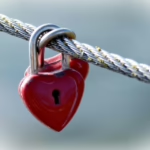


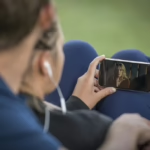


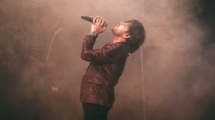







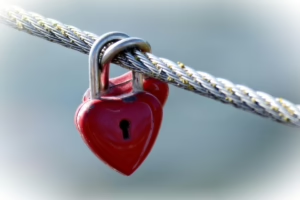


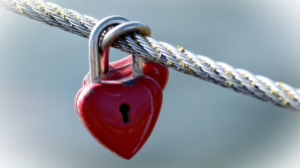






Add Comment